To 3D Or Not To 3D: Choose The Right Green Hornet Ticket
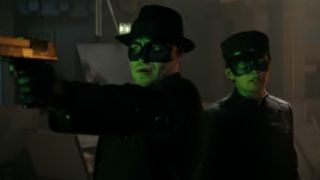
If you hit the theater to buy a Green Hornet ticket this weekend, the biggest decision you'll face isn't when or where to see it, but how to see it. Seth Rogen's new superhero movie hits theaters in both 2D and 3D options and with 3D ticket prices now skyrocketing to as much as $30 a ticket in some areas, you'll need to be sure you're making the right choice. We're here to help.
Our “3D Or Not To 3D” series exists not to analyze the relative merits of a movie like The Green Hornet as a film. If you're interested in my review of the movie, click over to my review right here. What you'll find on this page though, is a mostly unbiased analysis of the merits of The Green Hornet's 3D on a technical level, only. To make that easy to digest, we've developed a straightforward, 7-point rating system to help you determine whether 2D or 3D is the right movie-watching choice for you. Let's roll Kato…

Does It Fit?
The frustrating thing about the current state of 3D technology is that, up till now, it hasn't really worked on live action movies. It has almost always looked best when used on computer generated images. Even Avatar is technically mostly CGI, and that's a big part of why it looked so good in the third dimension. The Green Hornet on the other hand, is an entirely live-action film. None of it is computer generated. That should make things tough. Yet the film is an action movie and, if you're going to use 3D on something, that's the kind of film you want to use it. It also helps that it's directed by Michel Gondry, an indie-film director with a flair for visual whimsy. On the surface, the melding of his eye-popping creativity and properly implemented 3D seems like it could be a good idea.
3D Fit: 3/5
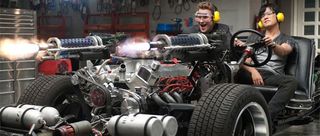
Planning & Effort
The Green Hornet uses post-converted 3D. That means the film wasn't shot in 3D, instead they shot it in 2D and then converted it to 3D after the fact. Worse they hadn't intended for the film to be displayed in 3D when it was originally shot, which means that director Michel Gondry didn't film the movie with 3D in mind. That said, it would seem that once Sony decided to convert the film into 3D, they made it a point to take the time necessary to get it right. Some of the reshoots done after the completion of filming were shot in 3D (though the vast majority of the film remains a post-conversion). The film's release was delayed several weeks, in part to allow them more leeway in completing the 3D post-conversion process. Gondry further claims he was deeply involved in the 3D conversion process. This wasn't something Sony forced on him. So while neither the studio nor Gondry really planned the film's 3D out in advance the way they probably should have, once they decided to convert it into 3D it appears as though they actually took the time to do the best they could with it. Has that paid off? Stay tuned. For now, they get another split score here.
Effort: 3/5
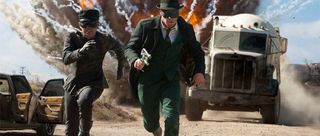
Beyond The Window
CINEMABLEND NEWSLETTER
Your Daily Blend of Entertainment News
Properly used 3D can give depth a projected image, creating the illusion that instead of looking at a picture on a flat surface, you're looking through a window into another world which exists just beyond the screen. Green Hornet pulls that off beautifully, maybe better than any other post-converted movie has before. It's easily the best use of depth we've seen in a fully live-action 3D movie. Gondry uses the depth of 3D to pull off all sorts of visual tricks. During action sequences, for instance he creates the clear illusion that debris flying in front of the heroes is literally closer to us than it is to them, maybe even in danger of flying through the imaginary window in front of us. In one particularly dizzying sequence he actually uses 3D in a complicated series of split screens in which we see dozens of separate scenes happening on screen at once, but all at different 3D levels. It's something no one else has really tried before and, while I wouldn't want to watch that particular effect for more than a minute (a headache would surely follow) it's a unique and completely new take on the way to use 3D technology. That The Green Hornet does it with live action and not computer generated images, makes it that much more impressive.
Beyond The Window: 5/5

Before The Window
3D is more than just picture depth. Used right it can also be used to make it seem as though objects are actually front of the “window” box outline of the screen, even make it seem as though elements of the picture float out over the heads of the audience. Used poorly this can turn into a cheap gimmick, but it doesn't have to be. The best 3D finds a way to use all the tools of the technology as part of its storytelling device. Unfortunately The Green Hornet doesn't even try to use this element of 3D. That may be in part because the film was post-converted and hadn't been originally planned as a 3D film. Maybe we should even give them credit here for not attempting to do something that probably wouldn't have worked out very well anyway, considering the circumstances under which Green Hornet was turned into a 3D release. They get a 2 for not screwing it up by attempting something they lacked the ability to do, but ideally this film should have been planned in 3D all along, enabling them to more fully utilize the format… especially if they're charging audiences $30 a ticket.
Before The Window: 2/5
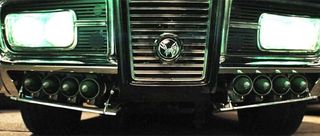
Brightness
Watch a movie wearing a pair of sunglasses and the picture will become too dim. 3D glasses are no different. The lenses in front of your eyes are filters which, invariably block some of the visible light emanating from the screen in front of you. There may be ways to compensate for this using the theater's projector, but ideally 3D should only be used on movies which create images using crisp, sharp colors which can fight their way through the 3D fog. Green Hornet does that with lots of sharply contrasting colors. The Black Beauty may be a black car, but it gleams in the light as Kato drives it through the streets. Night scenes aren't quite as successful, but even those are remarkably clear for a post-converted live action film. Michel Gondry goes out of his way to make sure that every action scene is staged in a way that you know what's going on, and he least attempts to make everything bright enough to survive the light devouring power of 3D. Again, it's especially impressive that he's pulled this off with a live-action film. In the real world, without computers to control them, shadows are often less forgiving.
Brightness: 4/5

Audience Health
The simple truth is that 3D makes a lot of people sick. There's always a chance that you could walk out of the theater with a ringing headache or worse, end up spending half the film throwing up in the handicapped stall of the theater's bathroom. 3D has even been known to cause seizures. There's no way to guarantee that won't happen whenever you see any 3D movie, but the odds that it will happen decrease when the movie's uses 3D the right way. The Green Hornet uses crisply constructed 3D images and avoids pushing the technology beyond the limits of what their post-converted movie is capable of supporting. However Gondry does get pretty creative with how he uses it and there's a chance that sequences, like the aforementioned split-screen sequence, may have an unexpectedly negative effect on more sensitive 3D viewers. Luckily moments like that one are pretty brief and the majority of the film is unlikely to present any serious risk to the average 3D viewer's well-being.
Audience Health: 3/5
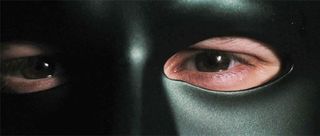
The Glasses Off Test
Take your glasses off while watching a good 3D movie, and more often than not you'll find yourself looking at a blurry mess. You may even notice that during the most 3D intensive parts of the film, the picture on screen becomes even blurrier. The simplest way to explain this is to say that the blurrier the image on screen appears without glasses, the more depth is created on screen by the picture's 3D effects. The best 3D movies vary depth levels to play tricks with your eyes and pull off impressive special effects. Gondry's no different, he spends a lot of time playing with different levels of 3D throughout the film and, nearly every time I took my glasses off I saw a different level of distortion in the images being projected. It's a sure sign that, even though the movie was post-converted after the fact, the creative people behind the film had a lot of input into how it should be used to tell their story.
Glasses Off Test: 5/5
| SCORES RECAP | |
| 3D Fit | 3 |
| Planning and Effort | 3 |
| Beyond The Window | 5 |
| Before The Window | 2 |
| Brightness | 4 |
| Audience Health | 3 |
| The Glasses Off Test | 5 |
| Total Score | 25 (out of a possible 35) |
Final Verdict: The Green Hornet is almost without a doubt a new high-water mark in post-converted, live-action 3D. No other movie pushed into the format this way has ever worked quite as well. There's every reason to believe that this is just the first of many improved post-conversions headed towards theaters. Word from experts in the industry is that post-conversion technology is rapidly improving and may soon even reach the point where shooting in 3D isn't necessary. Yet even though Green Hornet does post-conversion better than just about any movie before it, since the film wasn't written or shot with 3D in mind there are real limits to how much could conceivably be accomplished. The Green Hornet makes the best effort possible under the circumstances, but Avatar this isn't.
Most Popular






